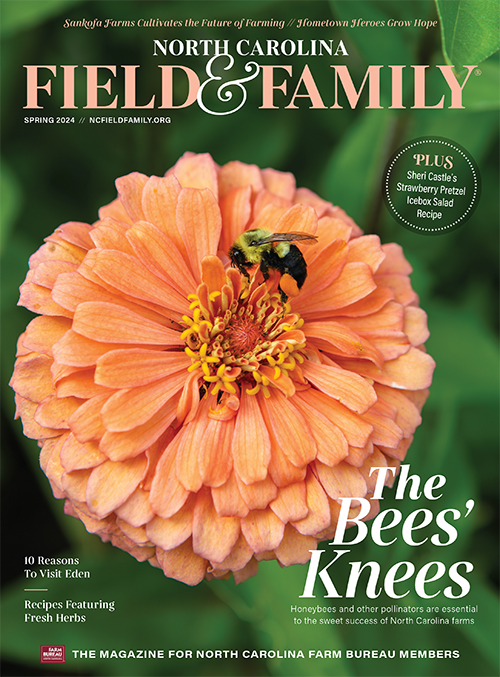Ag Research Helps N.C. Farmers Feed More People on Less Land
N.C. farmers and agriculture contribute $103.2 billion to our state’s economy, and we celebrate the hard work it took to get here.
Hannah Lewis |Recently, N.C. Agriculture Commissioner Steve Troxler broke the good news that N.C. farmers and agriculture now contribute $103.2 billion to our state’s economy, and we celebrated with pride the hard work it took to reach this incredible milestone. I often talk about North Carolina agriculture’s successes, but how did we get here?

As farmers, we sometimes forget that the public doesn’t really know what we do, although we appreciate that they are generally curious about how their food is grown. I’m excited that this issue features farmers who welcome guests for on-farm dinners and farmers who do a great job sharing their stories on social media.
See more: Fall Jokes
On-farm events offer visitors the chance to meet farmers and have important conversations about the science and best practices of producing food and fiber. I want to take the opportunity to focus on the significant role that research plays in a farmer’s daily life and work. Farmers spend a major part of the year planning for the next year, and that planning usually includes attendance at field days, commodity conferences, and other events where they can investigate the newest and best practices in farming.
Agricultural Research Abundance
Maybe, as you drive around, you see a particular farm’s fields planted with the same crop year after year. Let me assure you that much thought, preparation and research has gone into each new crop, and much of that research originated at one of our land-grant universities.
North Carolina is home to two outstanding land-grant institutions, NC State University and North Carolina A&T State University, recognized as national leaders in agricultural research. Most recently, North Carolina Farm Bureau has celebrated its investment in the Plant Sciences Initiative at NC State University. We support this collaborative, partner-driven effort because we know farmers need the sharpest minds and most innovative technology to develop solutions for dealing with weather extremes, ever-evolving pests and other issues facing agriculture.
See more: John Burt Advocates for Land Preservation
As of 2022, North Carolina is the third-fastest growing state in the U.S., but we are concerned that the state ranks second in farmland loss. By the foresight and dedication of many in agriculture, past and present, we have made incredible strides in the past century that allow fewer farmers, working less land, to continue to feed a rapidly increasing population. Agriculture is counting on research, development, and the support of consumers and partners to continue to provide fresh, affordable, and abundant food for a growing state and world.
– Shawn Harding, North Carolina Farm Bureau President


